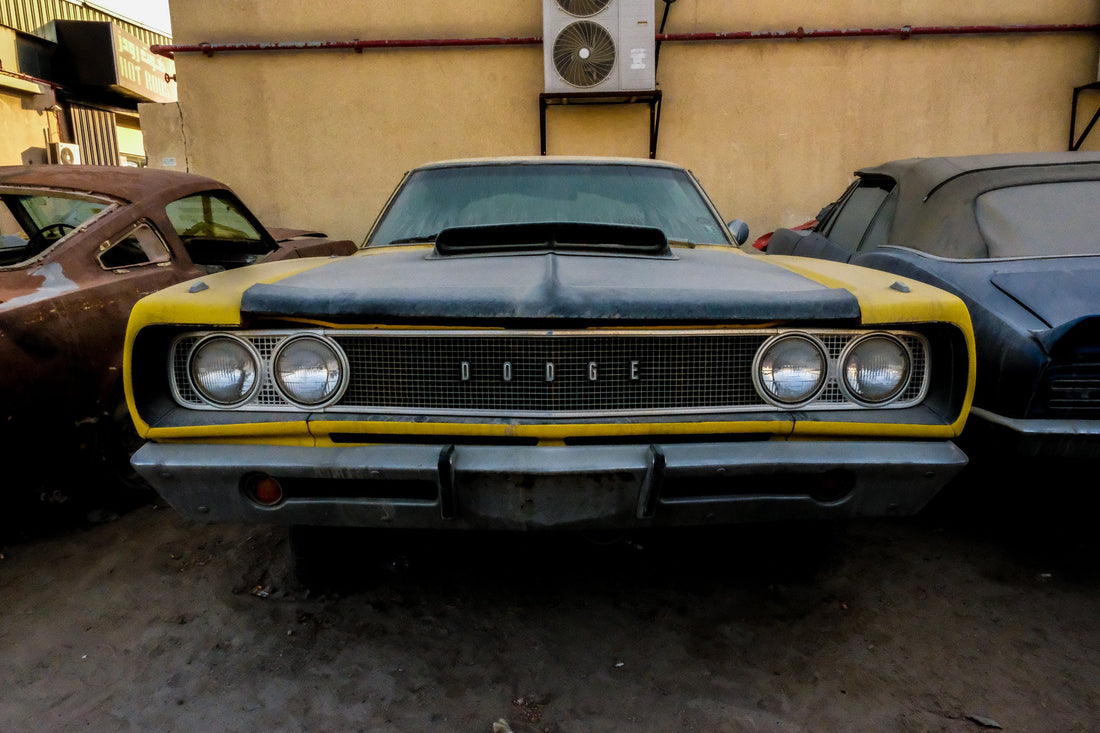
The History of Mopar: Why It Still Rules American Muscle
Darrien EouseWhen you hear the word Mopar, you don’t just think of parts—you think of power, attitude, and a legacy that's as American as asphalt and octane. Mopar isn’t just a brand under Chrysler; it's the heartbeat of generations of muscle car fanatics who never stopped wrenching, racing, or remembering what made the golden era of Detroit iron so damn iconic.
Where It All Started
Mopar began in 1937 as a contraction of MOtor and PARts, originally used for antifreeze products. But it quickly became Chrysler Corporation’s parts and service brand. What started as a logistics and support arm turned into something much bigger. By the time the 1950s and '60s rolled around, Mopar was more than just parts—it was engineering muscle.
Chrysler began building performance powerhouses that weren’t just fast but intimidating. Their cars had presence. By the time the HEMI name came around in 1951 and then again in the 1960s with the second-generation 426 HEMI, the Mopar name was no longer behind the scenes. It was front and center on the drag strip, at Daytona, and on every street corner where rubber got laid down.
The Golden Era: ‘60s and ‘70s Muscle
Ask any old-school Mopar guy and they'll tell you: the late '60s and early '70s were the peak. Dodge and Plymouth were pumping out legendary machines:
-
Dodge Charger R/T
-
Plymouth Road Runner
-
Dodge Super Bee
-
Plymouth GTX
-
Dodge Dart Swinger
-
Plymouth Barracuda (and of course, the Hemi ‘Cuda)
These weren’t cars you quietly drove to the grocery store. They were built to make noise, leave stripes, and win races. And underneath it all? Mopar parts, Mopar engineering, and Mopar soul.
Mopar vs. The World
While GM and Ford battled it out with volume, Mopar carved out its corner with innovation and raw attitude. Torsion bar suspensions, unique transmissions like the TorqueFlite 727, and underrated small-blocks and big-blocks gave Mopar cars a different feel. They weren’t copycats. They were built different—and their owners liked it that way.
Mopar people always had an underdog mentality. You weren’t just buying a fast car; you were joining a crew that lived by its own rules. That bond became unshakable, even when the muscle car market crashed in the mid-'70s.
The Fall, the Comeback, and the Brotherhood That Never Left
Like all muscle brands, Mopar hit a rough patch in the late '70s and '80s. Emissions, insurance hikes, and fuel crises took the roar out of Detroit. But the Mopar faithful never left. They kept the old cars alive, passed them down, restored them, and ran them at local tracks.
Then the early 2000s hit—and the legend was reborn. The HEMI came back. The Charger, Challenger, and later the Demon and Hellcat brought real horsepower back into showrooms. Mopar wasn’t just alive again—it was louder than ever.
Why It Still Matters Today
The Mopar community is one of the most loyal, engaged, and passionate groups in the automotive world. They don’t just admire cars—they build them, race them, and live through them. It’s more than performance specs and horsepower figures. It’s the feeling of stepping into something with soul.
Mopar means being proud of doing things the old-school way. It means getting your hands dirty, not settling for stock, and knowing that the garage is as important as the street.
That’s why Mopar still rules.
And always will.



















3 comments
Nice
My dad drove Plymouth’s and Dodges, I followed suit growing up. Still driving the 71 Plymouth Road Runner I got in the 80’s
1968 Yellow Coronet do you still have the car is engine compartment green it could be my old car is car for sale please message me thank you